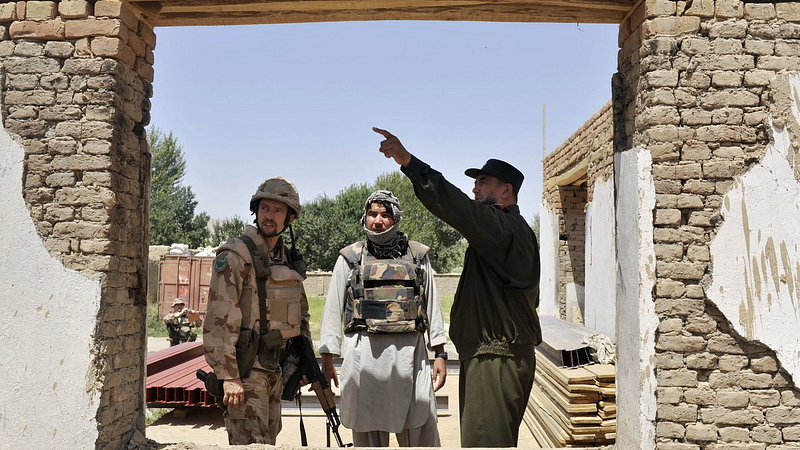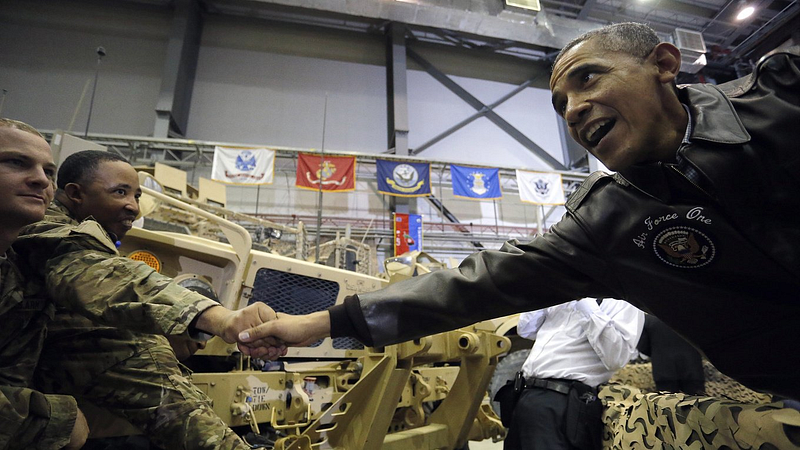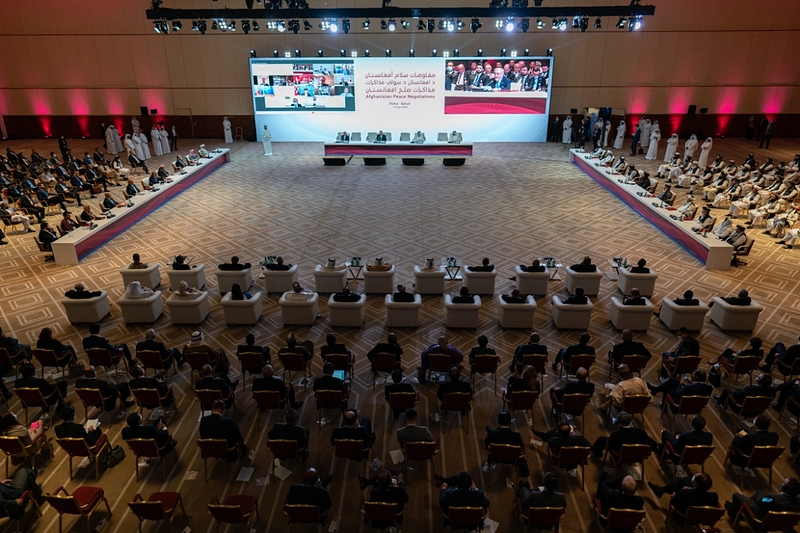Leaving Afghanistan, Wise or Foolish?
Perhaps it is apt to say that Afghanistan is the ‘graveyard of empires’ as its people fought off invasions from the British empire and the…

Perhaps it is apt to say that Afghanistan is the ‘graveyard of empires’ as its people fought off invasions from the British empire and the Soviet Union in the past century and a half. In 1989, demoralized Soviet forces left the country, suspended in disbelief that they were defeated by guerilla forces known as the Mujahideen. Destabilized by this invasion, the Taliban (an Islamist organization seeking to create an Islamic Emirate, similar to ISIS) overthrew the Afghan government shortly thereafter. It is believed that this failed invasion indirectly caused the dissolution of the Soviet Union only 2 years later.
Source: Britannica
The United States subsequently acquired the status of the world’s sole superpower and its military prowess was increasingly apparent to the world since its primary enemy had collapsed. After a decade of relative peace on the global stage, the tragic September 11th attacks left the American public outraged and this eventually resulted in the invasion of Afghanistan later that year. The rationale behind the U.S. invasion was that the Taliban regime harboured the perpetrators of the attack, namely Osama bin Laden and the terrorist organization Al-Qaeda. The war was seemingly won when the regime collapsed in December 2001 and reconstruction efforts began in early 2002. However, this would eventually become America’s second Vietnam as the war dragged on and its objectives became increasingly muddled.
What led up to NATO forces being stationed in Afghanistan for over two decades?
In the years to come, NATO became increasingly involved in aid and combat operations as the U.S. shifted its focus to neighbouring Iraq whose dictator, Sadaam Hussein, was suspected of possessing nuclear weapons. However, as time went on, notwithstanding successful elections and rebuilding, weak governance hampers the nation-building efforts and violence once again resurge in 2006. Between 2007–2008, disputes within the multinational alliance started to severely impact the progress that Afghanistan is making towards ensuring its own security as foreign forces will eventually have to withdraw and the Taliban, if not defeated, will once again pose a threat to the very foundations of the country. The collateral losses incurred during tactical operations by the U.S. military in Herat province in late 2008 certainly reinforced the Taliban’s threats and diminished the Afghan government’s trust in the coalition’s ability to protect its citizens. In 2009, recently-elected President Obama recommitted 17,000 more troops into the combat zones within Afghanistan, adding to the 37,000 troops already on the ground. According to the Secretary of Defense at the time, Robert Gates stated that the original goals of the war are no longer tenable and should instead seek to limit enemy safe-havens. The U.S. government also adopts a new strategy- stabilize Pakistan to stem aid to the Taliban war effort and pledges help to send additional soldiers to train local security forces. NATO countries also echoed the pledge and promised to provide security for the country’s August 2009 elections.
Source: Associated Press
Nearing the end of the year, however, troop numbers were once again bolstered to a total of 98,000. Amidst all the aforementioned developments, the slated troop drawdown was July 2011. With serious conversations about the handover of security responsibilities to national forces ongoing at the time, many in the West and the Afghan government expressed their concern at whether local forces could continue to ensure peace after international forces leave the country. Following the killing of Osama bin Laden, the war in Afghanistan was swiftly met with calls to hasten the drawdown of foreign troops as the prolonged conflict has eroded the initial public support. Despite having procured military gains during their deployment, the continued presence of NATO forces is increasingly frowned upon. The Bonn Conference, the first flash of hope for peace and stability in the country ultimately failed due to a growing insurgency as well as Pakistan’s refusal to attend.
Source: Reuters
At long last, the Afghan government under President Hamid Karzai took control of security responsibilities nationwide in June of 2013 following a demand the year before that confined foreign forces to their bases after several incidents painted them in a bad light. On May 27, 2014, President Obama ordered the first major troop withdrawal, leaving only 9,800 to conduct training and limited counterterrorism operations. Several months later, newly-elected President Asraf Ghani was forced to sign a unity agreement that entailed the sharing of executive powers with his opponent, Abdullah Abdullah which displayed cracks and weaknesses in the form of dysfunction within Afghan governance as the two tussled over their respective powers in the years to come. With the election of President Trump in 2017, his administration oversaw the attacks on ISIS and limited escalations undertaken by the Taliban in the form of suicide bomb attacks. Confidence in local governance continued to falter as domestic politics distracted President Asraf Ghani from security concerns. Throughout 2019 and 2020, a series of peace talks took place, resulting in an agreement between the Taliban and the Afghan government on February 29, 2020. During the Intra-Afghan Peace Talks, however, the issue of governance remained contentious when the Afghan government’s call for a cease-fire was met with the Taliban’s rebuke that the country should be run using an Islamic system. Before his term came to an end, his administration planned to reduce active forces within Afghanistan to only 2,500. President Biden announced in April this year that his administration will not follow the deadline set during Trump’s presidency on May 1st, instead, all troops (including NATO forces) will leave on September 11th. Despite this, Biden’s administration pledged continued support for local security forces and the peace process nonetheless.
What is the current situation in the country and will peace be an option?
Source: New York Times
In a few words, the situation on the ground at this moment is filled with despair and fear. The circumstances within Afghanistan are frankly quite bleak as the once-bustling Kandahar airbase has been left in disrepair with only the remaining 2,500 continuing daily operations. Knowing that the combat and tactical support from NATO and U.S. forces are on borrowed time, Major Mohammed Basir Zahid of an Afghan air command centre turns his focus onto Afghan aerial assets provided by the U.S. military aid programme to provide support for local forces battling a still resilient Taliban insurgency. It is not hard to see how America’s longest war has developed in a strikingly similar manner to Vietnam where U.S. trained and equipped local forces were abandoned to fight the enemy once public opinion back home turned against American involvement. An important distinction between these two engagements, however, lies in the fact that North Vietnam that eventually defeated U.S-aligned South Vietnam was provided with ample Soviet and Chinese matériel support; the Taliban fighting the Afghan government on the other hand is largely a self-funded Islamist insurgent group with little formal support other than Pakistan allowing insurgents to operate along its border with Afghanistan. According to an opinion piece from the Afghan Khamaa News Agency, most parties, especially those living in the country hope that the Intra-Afghan peace talks will bear fruit ie. resolving the clear divide between the Afghan government and the Taliban regime (otherwise known as the Islamic Emirate of Afghanistan) and restoring peace to the war-torn country.
Is the withdrawal beneficial or detrimental to Afghanistan’s future?
Source: Al Jazeera
Following the withdrawal, the future of Afghanistan is at a crossroads, both sides could reconcile and rejoice once foreign forces leave since the Taliban could no longer justify its attacks on government forces; alternatively, the Taliban could choose to wage another war to completely take over the country and establish the Islamic Emirate of Afghanistan which could once again become the staging ground for the weakened but now resurgent terrorist group Al-Qaeda. The humanitarian disaster that would follow the latter scenario would be a harrowing event and the international community should prevent it to the best of its ability.
In order to prevent another takeover, it is helpful to identify the root cause of the prolonged conflict. Amongst the many reasons, the failure to provide economic aid on a Marshall Plan-like scale to Afghanistan immediately after the initial collapse of the Taliban in certain ways ensured that the war would be prolonged as the fragile civil society and governance in Afghanistan simply could not discourage continued violence from the Taliban insurgency. According to the World Bank, the lack of sustained sources of growth and institutional issues such as corruption continue to plague the country. Thus, it is crucial for the international community Afghanistan National Peace and Development Framework formulated in a 2020 Geneva Conference. On a concluding note, to answer whether the U.S. withdrawal is wise or erroneous, there is simply no direct answer. Like many other contentious issues around the world, it is incredibly nuanced and the key to Afghanistan’s future ultimately lies in the hands of the current government and the Taliban.
Content Sources:-
Al Qaeda promises ‘war on all fronts’ against America as Biden pulls out of Afghanistan
The U.S. War in Afghanistan 1999–2021
Afghan retreat: US starts withdrawing from its longest war
Afghanistan: Unprecedented opportunity for peace is under high pressure
Day 1 of the End of the U.S. War in Afghanistan
[Written by Christopher Lim Min Jie]






